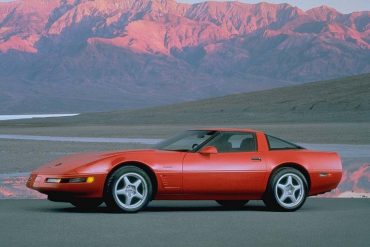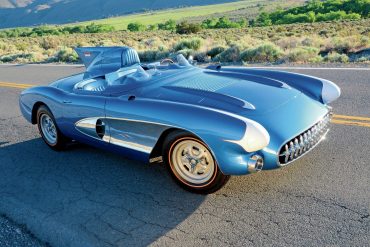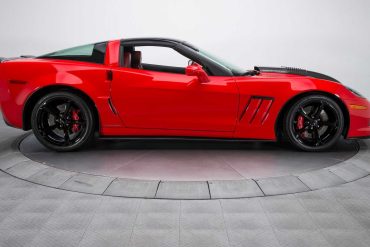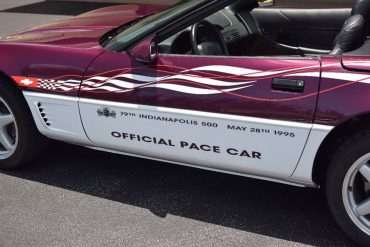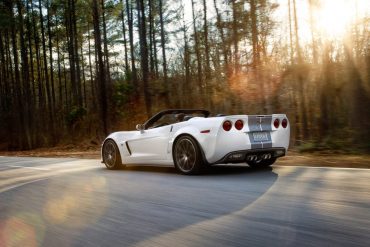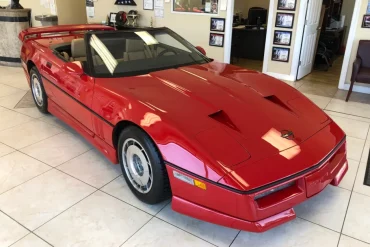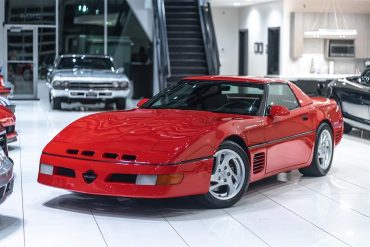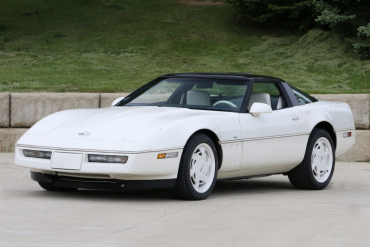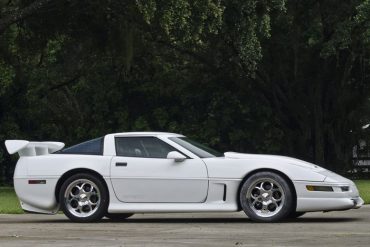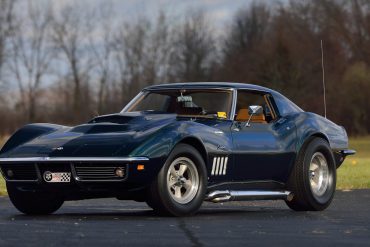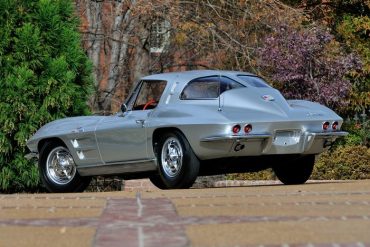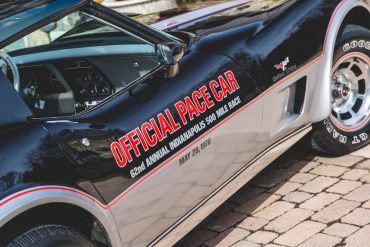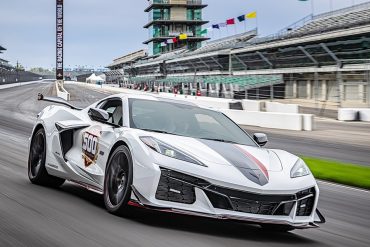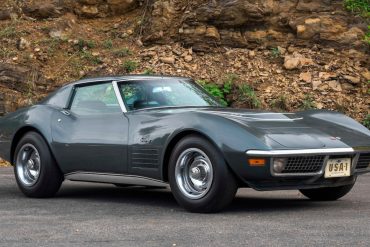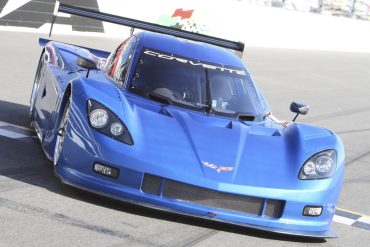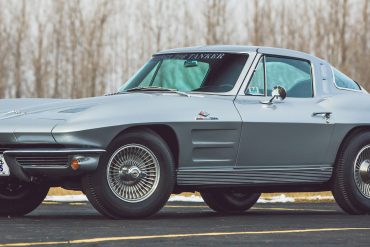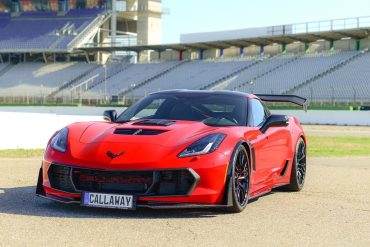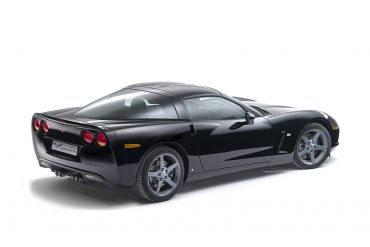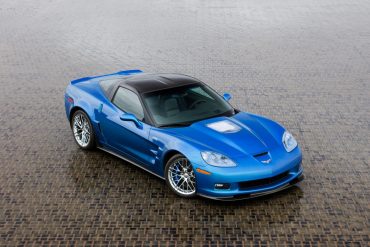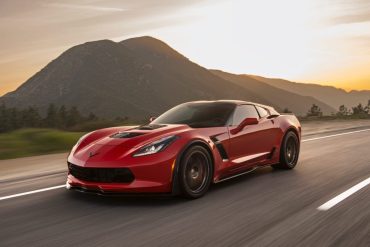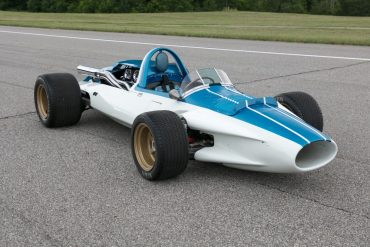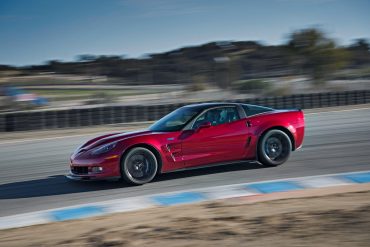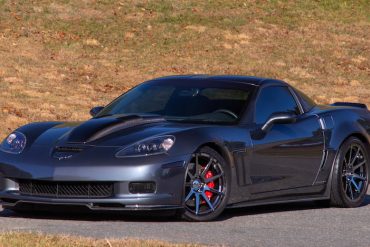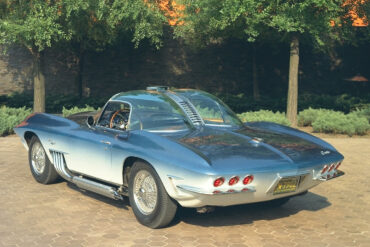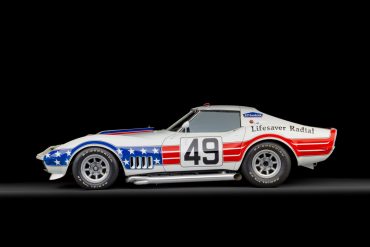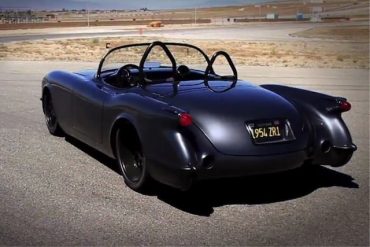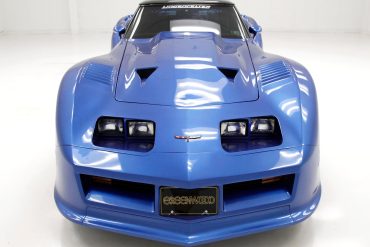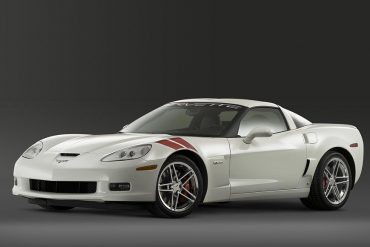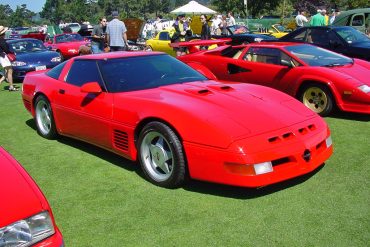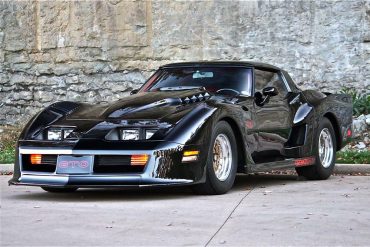The C4 ZR-1 Corvette, even some 30 years after its initial year of production, carries indisputable performance merit, the likes of which few can deny. In fact, the ZR-1 is often cited as the car which helped fend off threats, both foreign and domestic in origin, to the Corvette's elite performance car status. However, after only 6,939 ZR-1 Corvettes were built, and 6 years of production had passed, the program was terminated, falling victim to decisions regarding pricing.
Designed mid-1956 for Harlet Earl’s son Jerry, the SR-2 was put into racing duty in 1957. The car debuted at Daytona Beach in 1957 with a high-speed canopy, fender skirts and bullet-shaped frond headlights. Driven by Betty Skelton and Buck Baker, the car won the modified class with an average speed of 93.074 mph. The SR-2 also finished second in class for the flying mile with a top speed of 152.886 mph.
The 2005-2013 Callaway Corvette was a specialist version of the C6 Corvette, built by Callaway Cars expert craftsmen and sold through selected Callaway/Chevrolet dealers. The 17th “C-Project” undertaken by Callaway first produced naturally-aspirated SuperNatural™ 450, 461, 490 (6.0L) and 550 (6.8L & 7.0L) horsepower Callaway Corvettes. In February 2006, Callaway returned to its positive manifold pressure roots, introducing Callaway “SuperCharged” Corvettes.
The actual Corvette Pace Car that served at the 79th running of the Indianapolis 500 was a near-stock LT1 Corvette Convertible, except for the mandatory safety features that were required by the Indianapolis Motor Speedway. The Official Pace Car cam equipped with strobe lights, a special roll-bar, five-point safety harnesses for the driver and passenger and an on-board fire suppression system. Chevrolet built just three of the actual pace cars.
The 2013 Corvette 427 Convertible served double-duty as a commemorative edition model. While it marked the departure of the sixth-generation Corvette. The real selling-point was the powerplant at the heart of the car - a 427-cubic-inch (7.0L) LS7 engine, the same engine used in the C6 Corvette Z06. Rated at 505 horsepower (377kW) and 470lb.-ft of torque (637 Nm), this 427 was the most powerful engine GM had ever installed in a production Corvette convertible to date.
Offered from 1987 to 1991, the RPO-B2K upgrade was available from any Chevrolet dealer and also Callaway’s first major Corvette tuning program. Together, GM and Callaway made the upgrade package a Regular Production Order (RPO) which was the first time GM had outsourced such an option to a specialist manufacturer. It even had a factory back warranty. As the C4 updated, so did Callway’s program and by 1988, the B2K was pushing 382 bhp and 562 ft. lbs. of torque.
Chevrolet's introduction of the LT1 in 1992 as the base engine in the Corvette phased out the L98 based Callaway Twin Turbo. Previously, Callaway Corvettes made their increased power through positive manifold pressure; now they made it through increased displacement and finesse. Initially called the CL1 or CR1, they designated the chassis they were built upon. They were based on the pushrod LT1 cars (CL1) or the 32 valve DOHC LT5 ZR-1 cars (CR1).
While not exactly a "collector's edition" Corvette in its own right, it nonetheless has become a uniquely identifiable and collectible Corvette from the fourth-generation era. 1988 marked the 35th anniversary for Corvette, and so it was decided that Chevrolet should commemorate the milestone by introducing an anniversary-edition model. This anniversary car was the first of its kind in a decade, given that Chevrolet opted not to manufacture a Corvette in 1983.
For the fourth generation Corvette, legendary Corvette racer John Greenwood developed the G4R. It was essentially a radical bodykit that usually followed a high level of performance upgrades. Included was a ground effects package that had integrated lights on the front valance. Furthermore the a new engine scoop and rear wing were fitted.
Various upgrade packages were offered by Motion Industries, for the Chevrolet models included within the Baldwin Corvette partnership. The most prominent of these packages included the SS (425 HP) and Phase III (500+ HP) offerings. These cars not only came with a performance promise, but a guarantee to back it up. All Phase III cars came with a personal guarantee.
A Need for Speed – Both Then and Now The Chevy Corvette has always been synonymous with affordable high-performance. Since...
1978 was significant because it marked the cars 25th anniversary of production. Recognizing the achievement of manufacturing a car for a quarter-century, Chevrolet commemorated this accomplishment by introducing two special-edition Corvette that year. The first of these was known as the "Silver Anniversary" edition Corvette. It featured a two-tone silver over gray exterior with special pin-striping and special "25th Anniversary" badging.
The Indianapolis 500 is, for lack of a better term, America’s Race. It is part of the triple crown of...
Did you know that the earliest ZR1 Corvettes came into existence long before any of these later iterations? If not, then take a few minutes to acquaint yourself with one the rarest small-block production Corvettes of all time - the 1970-1972 Corvette ZR1. From 1970 to 1972, Chevrolet offered the ZR1 Special Engine Package, which featured a small-block LT1 engine.
For the 2012 Grand-Am season, Chevrolet was the first to unveil it's new DPG3 bodywork. This Corvette body kit will be built by Pratt & Miller and will be sold to customer teams. These body kits will fit on any existing Coyote, Riley, or Dallara chassis. This Corvette DP will be powered by a 5.0L V8 making 530BHP @ 7,000rpms and 450ft-lbs at 5,500rpms.
The first Z06 was actually an option package first offered with the 1963 Corvette. The package was developed by Corvette's legendary lead engineer and racing advocate Z0ra Arkus-Duntov. The Z06 option was designed to allow consumers to bolster the 1963 "Split-Window" Corvettes performance and handling capabilities for use on the race track. Selecting regular production option (RPO) Z06 when ordering a Corvette resulted in a car equipped with some tasty options.
Callaway Competition has constructed some of the most successful GT3 race cars in history. Competing against the world’s premier marques, Callaway is currently recognized as the most successful race team of the ADAC GT Masters series. To celebrate Callaway Competition’s 25th anniversary, we’re building 25 unique, specially-equipped “Callaway Champion” road cars. The Z06-based Champions are built by our expert craftsmen.
To celebrate the success of the Corvette Racing program, especially at the prestigious 24 Hours of Le Mans race, Chevrolet made the decision to manufacture a limited number of special-edition Corvettes that would be sold exclusively in Europe. This special-edition car was limited to just 250 units and marketed to European consumers as the Victory Edition Corvette.
The ZR-1 returned with the 1990 Corvette lineup after an eighteen year hiatus. This time, it featured a special LT5 engine that had been developed by Lotus (which, at the time, had been a subsidiary of General Motors.) The LT5 engine featured an all-aluminum block, four overhead camshafts, and 32 valves. It also featured an air management system which enabled the car to maintain proper operation while closing off half of its fuel injection system.
In the tradition of coach built shooting brakes, Callaway offers the AeroWagen for any version of the C7 Corvette Coupe. Its components can be fitted to the standard production C7, the Callaway SC627 Stingray or Grand Sport, or the Callaway SC757 Z06. The AeroWagen hatch assembly is a part-for-part replacement of the original equipment Corvette rear hatch, using the original hardware and latching mechanisms. It operates in an identical fashion.
The “CERV-1” (Chevrolet Engineering Research Vehicle) was developed as a research tool for that company’s continuous investigations into automotive ride and handling phenomena under the most realistic conditions. The car was built at the Chevrolet Engineering Center at Warren, Michigan in a special project headed by Mr. Zora Arkus-Duntov, Chevrolet Staff Engineer.
The 638-hp, 6.2-liter supercharged V-8 LS9 engine features such niceties as titanium connecting rods and intake valves, a forged steel crankshaft, and a dry-sump oil system. The suspension has magnetorheological shocks that enabled Chevrolet engineers to use softer springs than in the conventionally damped Z06. Corvette's top dog model is no joke and an accomplished sports car that puts up a good fight against the world's best.
To commemorate its quarter-century milestone, Callaway Cars collaborated with Chevrolet, arranging a production run of 25 uniquely prepared 2012 Corvette Grand Sport coupes and convertibles. General Motors supplied special parts and procedures on the Bowling Green production line to facilitate final assembly at Callaway factories. Then, the performance and identity components are installed by Callaway. The 25th Anniversary Edition produced 620 bhp and 555 lb-ft of torque.
The XP-755 was designed and the prototype was built in the beginning of 1961. Bill Mitchell was very excited about the double-bubble roof, the side exhausts and rear. It is equipped with a single four-barrel carburetor that produces upwards of 425 horsepower. The Corvette XP-755 Concept had a streamlined design, pointed snout and outlandishly future looking elements everywhere. The 1961 Mako Shark I (XP-755) was an early concept.
When one of his cars was severely damaged in 1972, John Greenwood converted his 1969 L88 Convertible into a formidable race car. Included as the formidable ZL1 engine with 750 bhp on tap. Other modifications included a rear spoiler, quick replacement radiator and camber adjusters. At Le Mans, this car set the GT-class record for top speed down the Le Mans straight with 215 mph.
Timeless Kustoms Breathes New Life into a Classic 1954 Corvette When introduced in 1953, the original Corvette was celebrated by...
What you see before you is a 1982 Chevrolet Corvette that has been fitted with a rare Greenwood Daytona body kit. The most extreme of the Greenwood brothers' kits, the Daytona body kit is a highly sought-after modification that was developed by race-winning specialists Burt and John Greenwood.
The Ron Fellows ALMS GT1 Champion Edition Corvette was introduced as part of the 2007 Corvette line-up. To commemorate Mr. Fellows long and successful career with the Corvette Racing program, Chevrolet introduced the Ron Fellows Championship Edition Z06 Corvette as part of their 2007 model line-up. It was released as a commemorative model to celebrate one of GM's winning-est drivers, but did little to impress enthusiasts or collectors when first introduced.
When Chevrolet changed gears to the LT1 engine, Callaway revealed their new SuperNatural line and the CR1 based on the ZR1’s LT5. Options for the CR1 included the radical Aerobody, German upholstery and special wheels, brakes and exhausts. The CR1 used a larger displacement to produce either 475 or 490 bhp.
The major differences between the 1980 and 1982 Daytona and the 1981 GTO are the hood, the tops of the rear fenders, and the rear spoiler/bumper cover. The Daytona had an elaborate, short vertical fin on top of the rear fender that turned several turns “in and back,” flowing to the wide, long, table-like rear spoiler. The GTO’s rear fenders pontoons are the same as.


